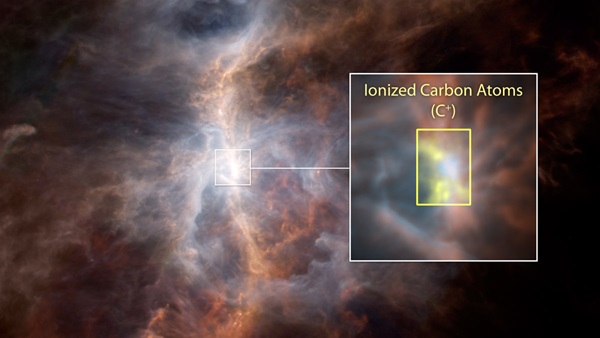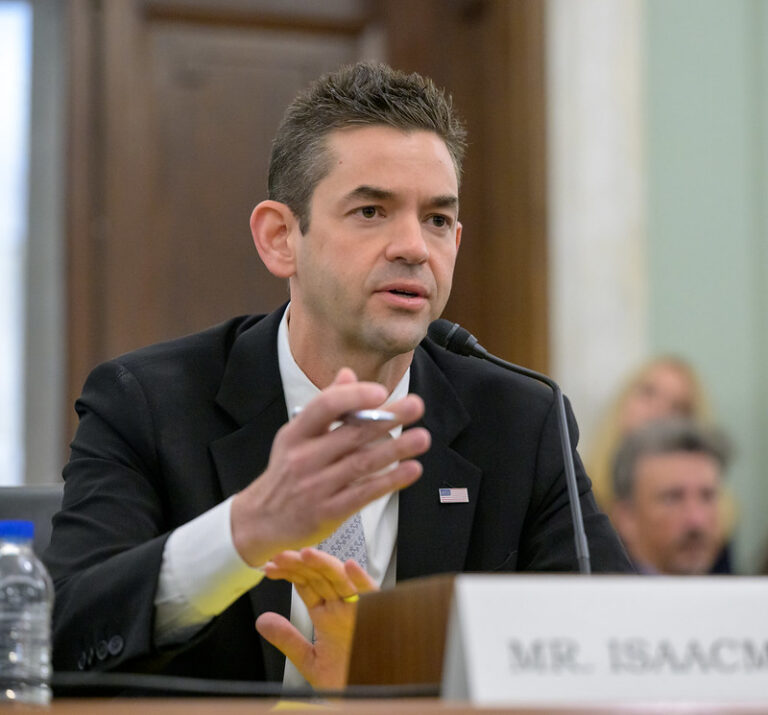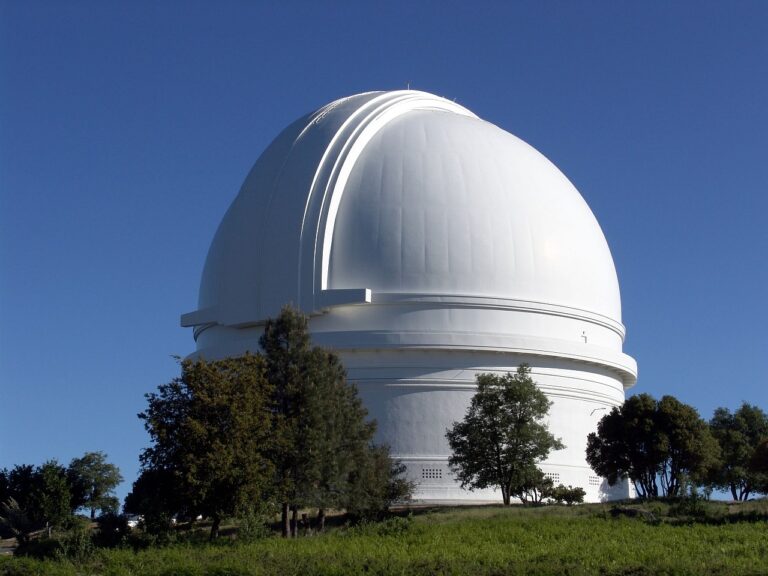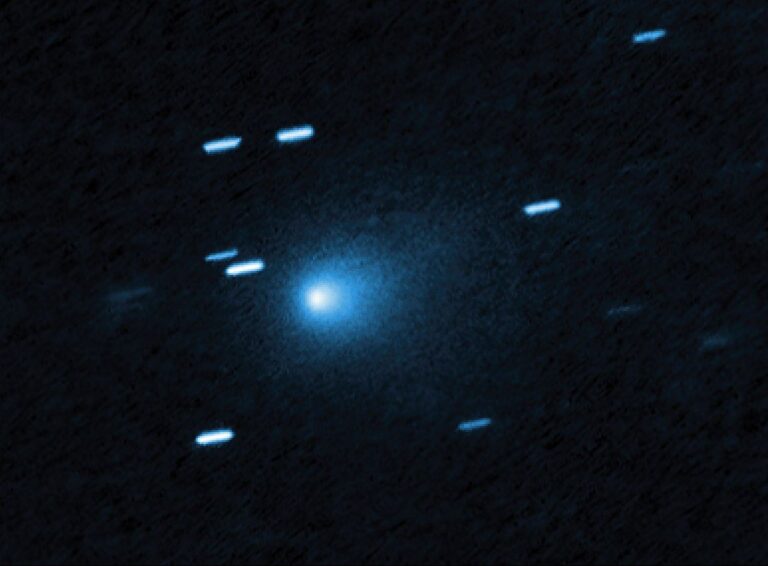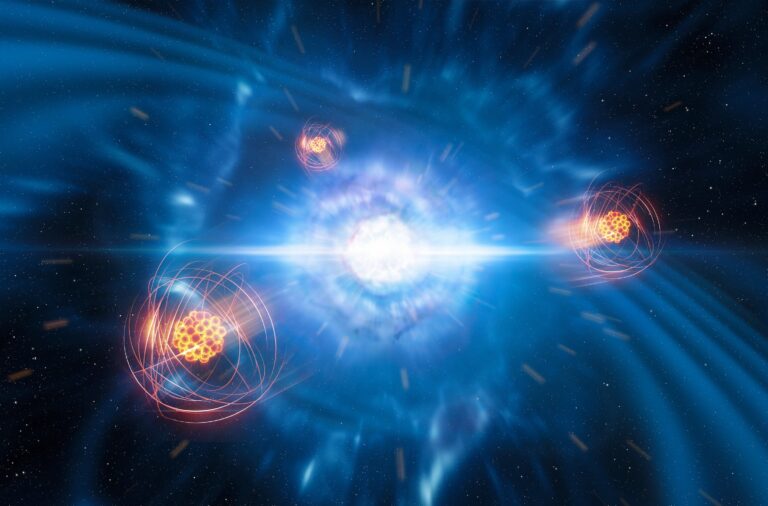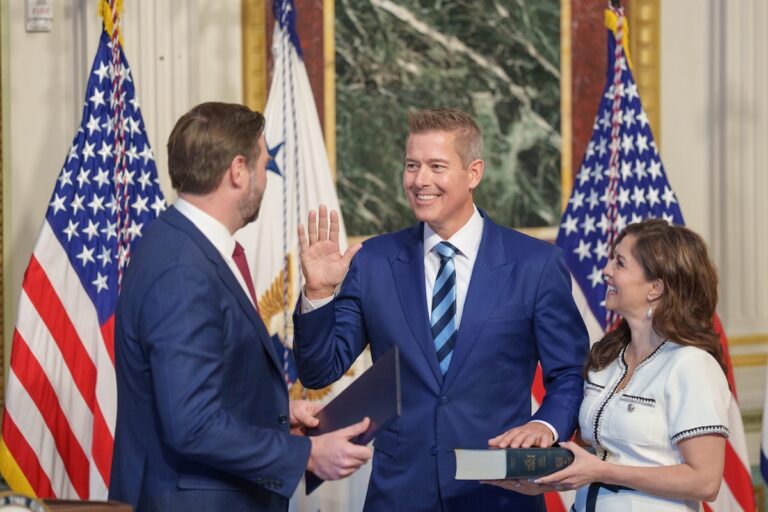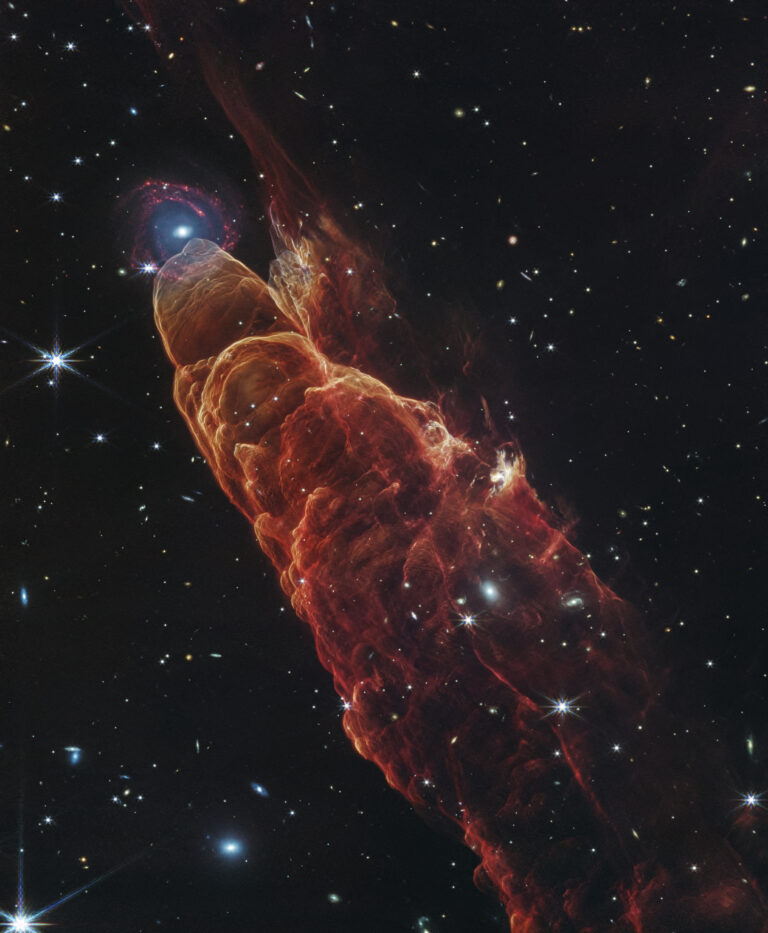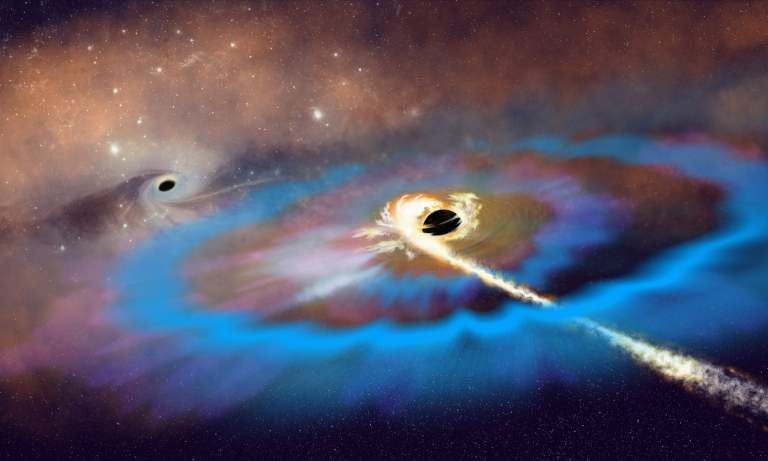Key Takeaways:
The theory used to be that hydrocarbons were created in “shocks,” or violent stellar events that cause a lot of turbulence and, with the shock waves, make atoms into ions, which are more likely to combine.
The data from the European Space Agency’s Herschel Space Observatory has since proved that theory wrong. Scientists at Herschel studied the components in the Orion Nebula, mapping the amount, temperature and motions for the carbon-hydrogen molecule (CH), the carbon-hydrogen positive ion (CH+) and their parent molecule: the carbon ion (C+).
They found that in Orion, CH+ is emitting light instead of absorbing it, which means that it is warmer than the background gas. This was surprising to scientists because the CH+ molecule is incredibly reactive and needs a high amount of energy to form, so when it interacts with the background hydrogen in the cloud it gets destroyed.
This data shows that the CH+ molecules were probably created by the ultraviolet emission of young stars in the Orion Nebula. When a hydrogen molecule absorbs a photon of light it either vibrates or rotates, but when hit by an ultraviolet photon it does both.
The Orion Nebula has plenty of hydrogen gas, so when ultraviolet light heats up the surrounding hydrogen molecules, it creates a perfect condition for hydrocarbons to form. When the interstellar hydrogen gets warmer, carbon ions start to react with the molecular hydrogen, creating CH+, which eventually captures an electron so that it can form the neutral CH molecule.
“It’s still a mystery how certain molecules get excited in the cores of galaxies,” John Pearson, researcher at NASA’s Jet Propulsion Laboratory and co-author of this study, said in a press release. “Our study is a clue that ultraviolet light from massive stars could be driving the excitation of molecules there, too.”

